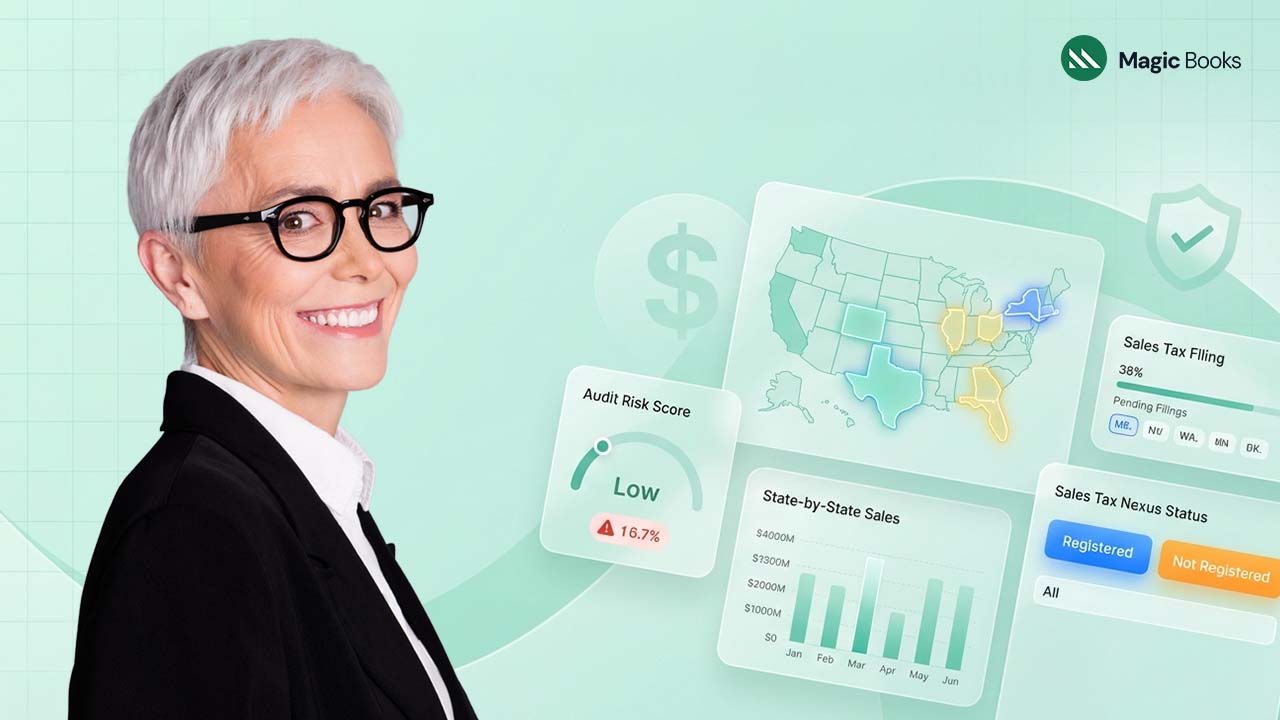It may sound simple, but running a business involves doing and remembering so many things. One thing you cannot afford to overlook is the due dates and tax deadlines. If you generate some income, the IRS assumes that a tax return with their due share would be submitted one tax season or another. It is indeed the case for an office worker, graphic designer, or startup owner.
All those deadlines are hidden somewhere among tens of thousands of pages of the federal tax law. Failure to file when required is very expensive as it attracts fines of thousands of dollars for failing to meet the tax dates and deadlines. Individuals who reside in the United States but will be temporarily located in a foreign country on April 15, 2025, will get an automatic two-month filing extension making the deadline June 16, 2025. However, it is important to note that whenever a due date on a tax return falls on the weekend; or on a federal holiday, then such a due date is re-scheduled to the next business day. June 15, 2025, falls on a Sunday, therefore, the ex-pats have until the next day; June 16, 2025, to file their income tax return. In the event you cannot file your income tax return by the deadline, you may request an automatic extension to October 15, 2025.
Calendar year vs. fiscal year
However, the business scan should show that there is a distinction between the calendar year and the fiscal year filing dates. Here the IRS states that only the calendar year from January 1 of a year to December 31 of that year can be used. It has defined a fiscal year as 12 successive months commencing on the first day of any month other than December and ending on the last day of that month.
First, all calendar year C corporations must file or extend their tax return by April 15. If you use a fiscal year, you must file or extend the return by the 15th day of the 4th month of the year following the close of your fiscal year.
In each case, a tax year can be of either form unless some other kind of tax year is required. Once you file using that tax year it is ‘adopted’ and you are ‘legally obliged’ to use it in future years. For some tax years, you may need IRS approval to change by filing IRS Form 1128 once a particular tax year has been chosen.
Changing your tax year is fairly straightforward, but be sure you’ve followed IRS regulations to do so. According to the IRS, the following actions do not constitute adopting a tax year:
- Filing an application for an Employer Identification Number (EIN)
- Filing an application for a tax extension on an income tax return
- Making estimated tax payments for a tax year
Most businesses can use a calendar year, and there are circumstances under which using a calendar year is required.
These include:
- Lack of recordkeeping
- No yearly accounting period
- The current tax year is not a fiscal year
- The IRS Code or income tax laws call for a calendar year
Is your business eligible for a refund?
While tax refunds are common when filing personal income taxes, most businesses do not qualify for a tax refund. This holds for businesses operating under sole proprietorships, partnerships, S corporations, or limited liability corporations (LLCs).
As it is with the computation of personal income taxes, most companies do not get a tax refund in this case. This is especially the case where a business is conducted under the business structures of a sole trader, partnership, S corporation, or LLC. This is the case because these entities are established to take income from the owners of the project and nothing more. The owners then declare their own share in the net taxable business income on their tax returns; which then get computed for taxes. This kind of business structure does not pay taxes to the Internal Revenue Service directly, hence the business as such cannot get a refund. They might get a refund depending on their income tax return as an owner. The exception would be a business that falls under the category of a C Corporation.
Filing the U.S. Corporation Income Tax, IRS Form 1120, a C corporation reports the corporation’s income tax directly to the Internal Revenue Service. Should the C corporation end up paying more in estimated tax than the actual amount legally owed on the final tax return, a refund may be owed. The IRS can classify an LLC as a corporation, partnership, or as a part of the owner’s tax return. A lot depends on the amount of members of an LLC or the choices made by the LLC. A domestic LLC with two or more members is a partnership for federal income tax purposes except if the LLC opts to be recognized as a C corporation by filing Form 8832. Although only C corporations could get a possible income tax refund, there are chances when the other types of overpaid taxes would entitle the business to a refund, irrespective of organization structure type.
Deadlines: Business-Related
- January 15, 2025 – 4th Quarter 2024 estimated tax payment due
- Early 2025 – 2024 Tax season opens
- January 31, 2025 – Employers send W-2s forms to employees
- January 31, 2025 – File some 1099 forms
- March 15, 2025 – Taxes are due for some business types (partnerships, multi-member LLCs, and S-Corporations). Businesses organized as partnerships, including multi-member LLCs, and S-Corporations need to file Form 1065, or 1120S by March 15, 2025, if they are a calendar year business. If your business uses a fiscal year, you need to file your tax return by the 15th day of the third month following the close of your tax year. For example, if your business uses an April 1 – March 31 tax year, your business tax return would be due June 15 instead of March 15.
- April 15, 2025 – C-Corporation Taxes Due. Businesses operating as C-Corporations must file form 1120 by April 15, 2025, if they are a calendar year business. If your business operates on a fiscal year, you must file your tax return by the 15th day of the third month following the close of your tax year. For instance, if your business operates on an April 1 – March 31 tax year, your business tax return would be due June 15 instead of in April.
- September 15, 2025 – Deadline for extended partnership and S-corporation returns
- October 15, 2025 – Deadline for extended C-corporation returns
- January 15, 2026 – Fourth quarter 2025 estimated tax payment due
What are the benefits of getting started on your taxes early?
Tax season is stressful. This is one of the ways of avoiding a lot of stress when you are already in the middle of the tax year. For you as a business person, your mind gets off the tax issues once you are sure your filing is well done before the due time.
What if you owe tax? First, that way, you will understand the amount of money you have to pay to the federal government, and you will have much time to plan how to pay it. You also realize that it is not necessary to pay the amount of money that is owed until the date that has been set. You do not have to sit down and panic on April 14 searching for ways to get the funds since you can complete the right tax forms and file them.
Your tax professional may be more available to you during this time especially given that those filing their returns early are likely to be fewer in a year. You can get an appointment with a tax professional much easier if you do it in January or February rather than in March or April. Indeed, beginning the process may be sure this would help you save money at the end of the financial year as well. You do not have to pay IRS penalties and third, you will often pay less for the preparation of your tax returns because most places do not charge any last-minute rush fees.
Tax extensions
At other times, a business or an individual cannot file by the due date and has to file for an extension to file taxes. For C corporations and sole proprietors filing Schedule C with their personal income tax return, tax extensions are due by April 15. S corporations or partnership taxpayers who request an authorized extension of time to file their taxes must file their tax returns by March 17, 2025.
For businesses that have filed for a tax extension, sole proprietors and C corporations have until October 15, 2025, to file their income taxes. For S corporations and partnerships, the due date for filing the return will be September 15, 2025, if they have filed for a tax extension.
W-2 filing deadline
Businesses that have employees have to fill out and file two W-2 forms, the Wage and Tax Statement, for every employee. Copies of such a form have to be furnished to the employee as well as filed with the IRS. The due date for these forms is January 31, 2025.
Form 1099 deadline
Businesses that work with independent contractors have to file Form 1099-NEC for non-employee compensation. Prior to 2020, businesses used the form 1099-MISC for miscellaneous income for such reporting.
Prior to 2020, the 1099-NEC was not used since the 1980s. Starting in 2020, the 1099-NEC will be the form used to report any payments to all individuals who do work for the business but are not on the payroll. The 1099-MISC did not disappear; it now is solely used for all types of miscellaneous income: rents received, legal settlements, and prizes.
The due date for furnishing this form to independent contractors and the IRS is January 31, 2025. Part A of 1099-NEC is submitted to the IRS, and Part B goes to the contractor.
If you are required to file a 1099-MISC form, the due date for filing a paper return is February 28, 2025. If you e-file, the due date is March 31, 2025. The copy that you provide to the recipient, Part B, must be provided by January 31, 2025. Again, Part A of 1099-MISC is filed with the IRS, and Part B is sent to the recipient.
What are the consequences of late filing?
The IRS also assesses a late filing penalty as well as a late payment penalty. It depends on how late you are in filing and payment and the amount of tax you owe for you to know how much you will have to part with. Failing to meet the tax deadline without applying for an extension attracts a penalty. Other forms 1120 and 1040 come with a penalty of 5% of the unpaid tax for each month the return is delayed. It takes the form of a penalty of $210 per shareholder or partner for every one-month delay as allowed for up to 12 months, for forms 1120-S and 1065. That amount adds up very quickly. When one is unable to pay the amount of tax for the given period within the stipulated period, there is a penalty known as penalty_stdio, which is 0.5 % of the amount due for every month that it remains unpaid.
There is some good news for filers of Form 1120 or 1040. These penalties max out at 25% of the total tax owed. In a worst-case scenario, you max out at the 5% penalty for missing the tax deadline after five months. That “failure to pay” penalty keeps going for quite some time if not resolved, with a total of 45 months or close to four years.
In addition to penalties, you will also face interest charges. The interest is charged for every day that you are late. It is not only applied to your total tax due but also to your accrued penalties. The interest rate equals the federal short-term rate plus 3%.
What if your business is a new corporation, and you have no taxable income? You still have to file a tax return. New partnerships do not have to file a separate return.
So, starting early, there is no practice of rushing and hence less chance to make mistakes. Of course, you must keep your accounts current; that way when you are ready to have your business taxes done, they will be done as soon as possible!



